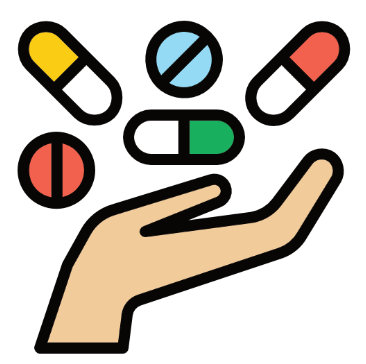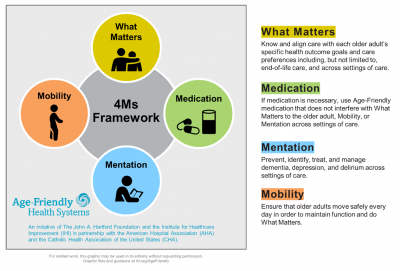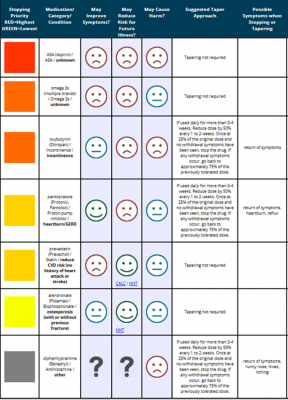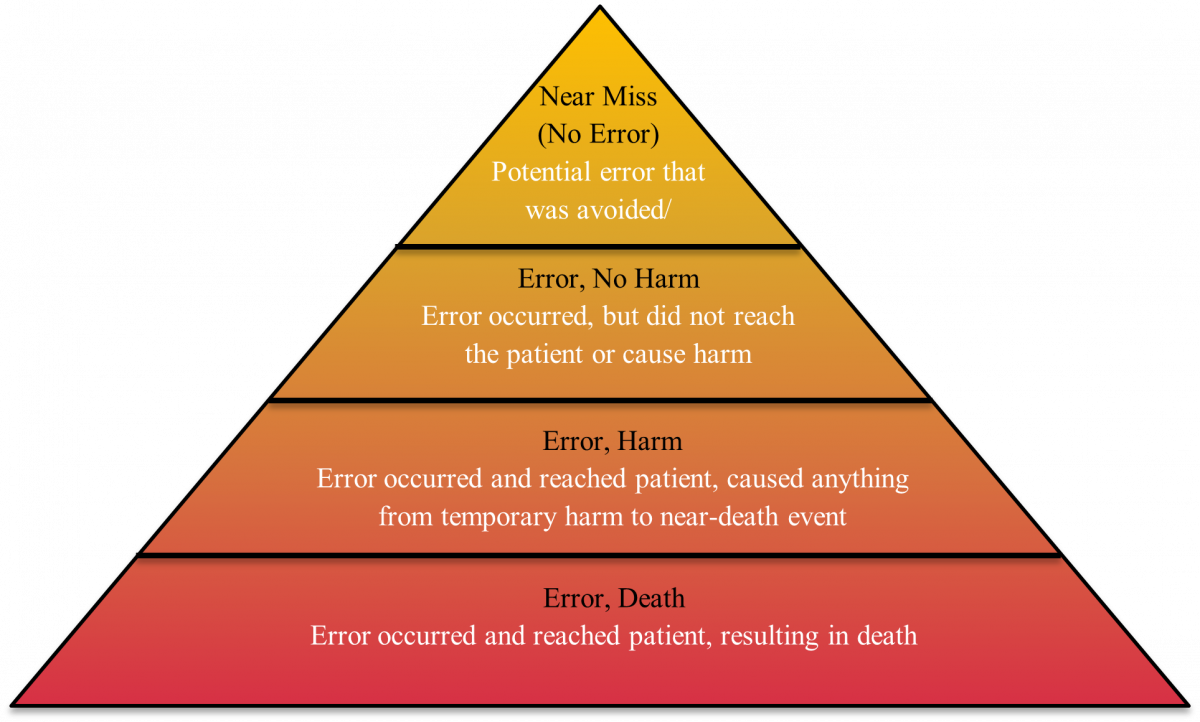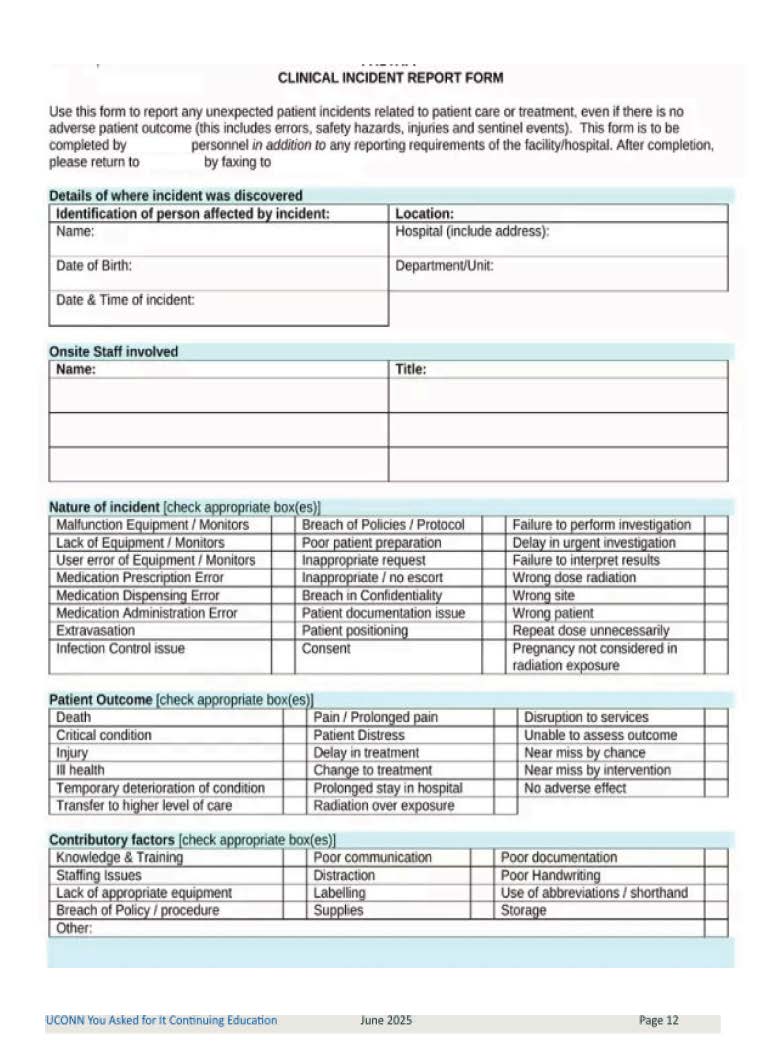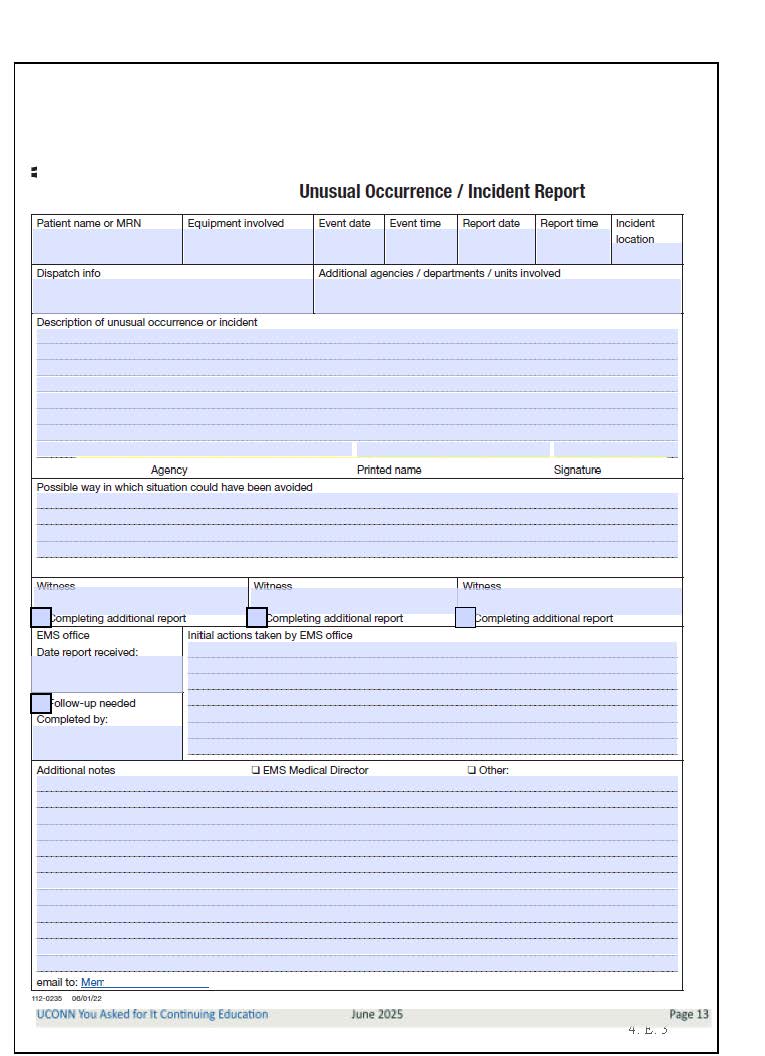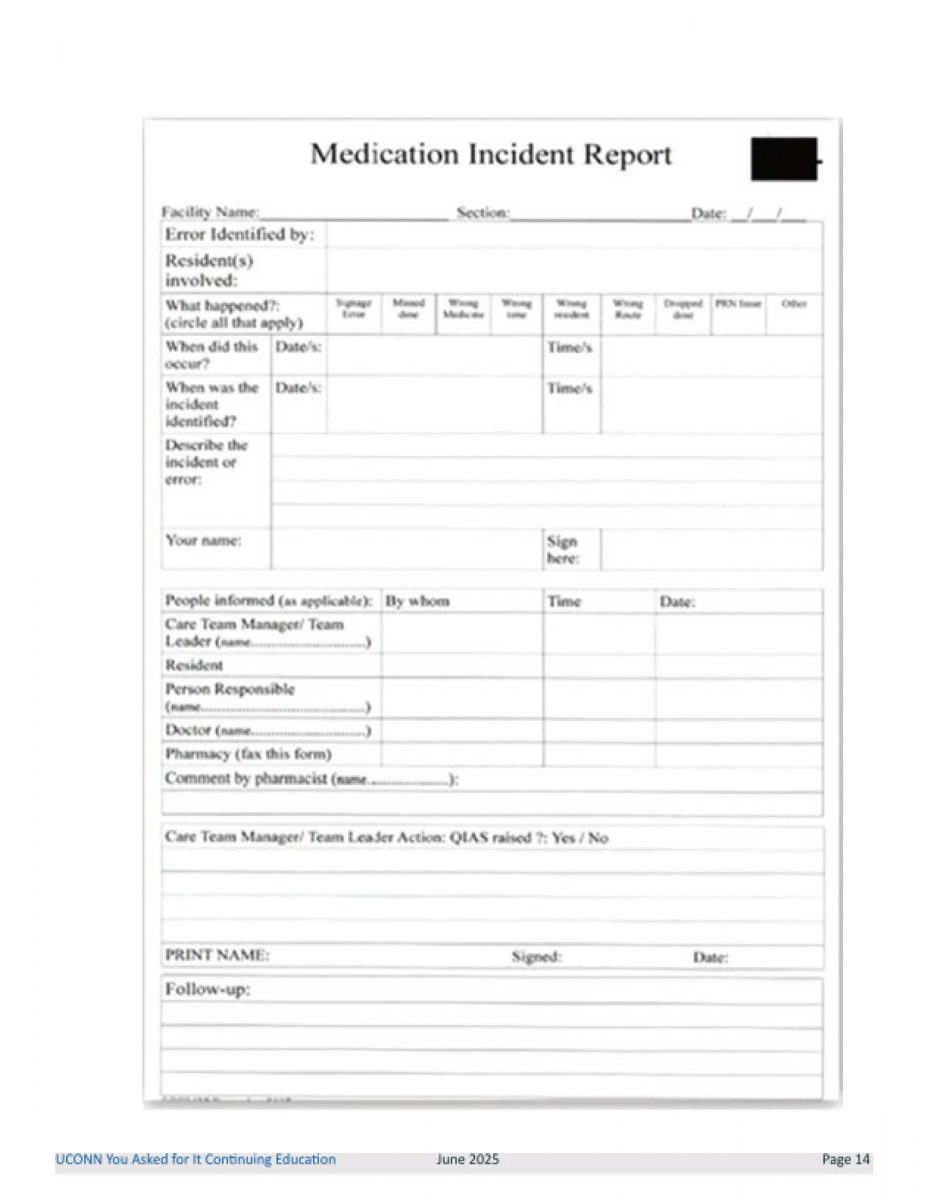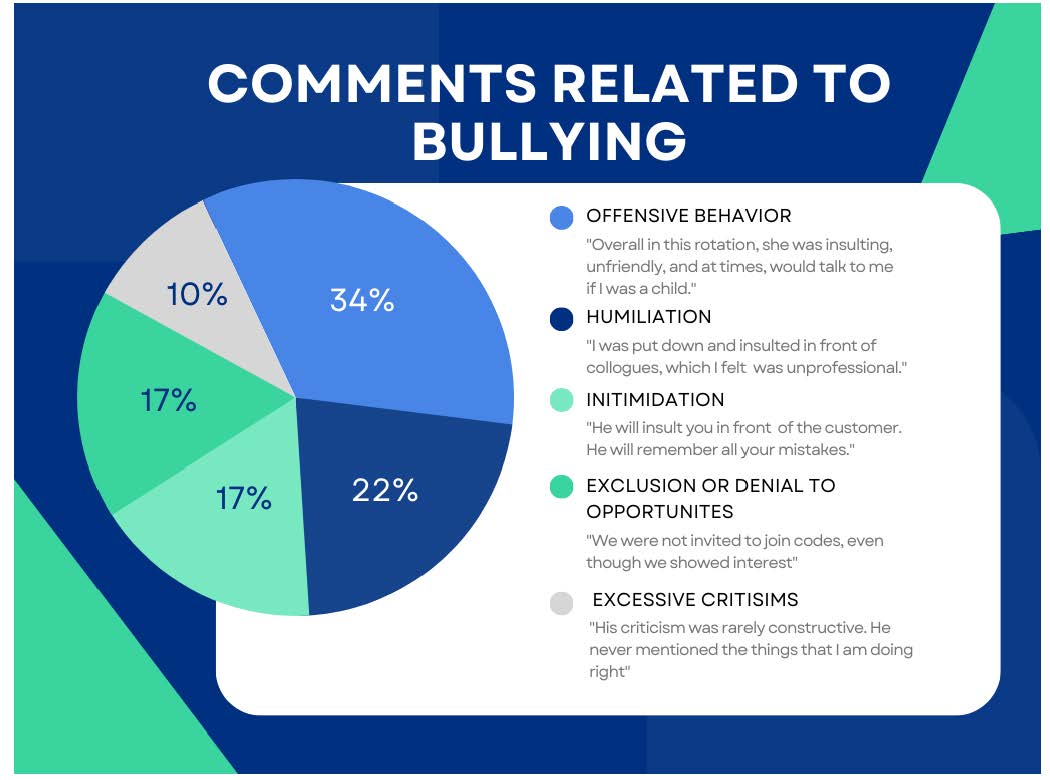Learning Objectives
After completing this application-based continuing education activity, the pharmacist will be able to:
- Identify differences in composition and health benefits associated with creatine, protein powder, and pre-workout supplements
- Describe creatine dosing, common adverse effects, contraindications, and differences in available formulations
- Determine dietary preferences, digestion tolerance, and patient's individual health goals when selecting protein powders
- Provide timing and dosing for protein powder supplementation to maximize exercise recovery and muscle support
After completing this application-based continuing education activity, the pharmacy technician will be able to:
- Identify differences in composition and health benefits associated with creatine, protein powder, and pre-workout supplements
- Explain common misunderstandings about the use and safety of creatine, protein powder, and pre-workout supplements
- Discuss nutrition labels to help patients select appropriate supplements based on patient's individual health needs
- Infer when to refer individuals' questions to the pharmacist
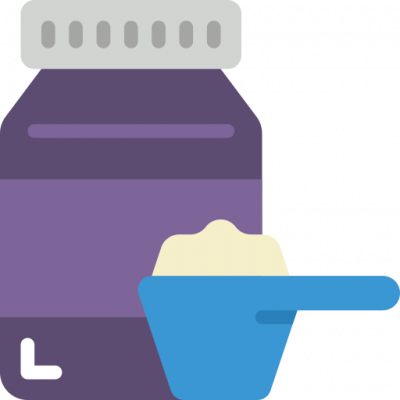
Release Date:
Release Date: September 20, 2025
Expiration Date: September 20, 2028
Course Fee
Pharmacists: $7
Pharmacy Technicians: $4
ACPE UANs
Pharmacist: 0009-0000-25-033-H05-P
Pharmacy Technician: 0009-0000-25-033-H05-T
Session Codes
Pharmacist: 25YC33-HGJ14
Pharmacy Technician: 25YC33-JHG41
Accreditation Hours
2.0 hours of CE
Accreditation Statements
| The University of Connecticut School of Pharmacy is accredited by the Accreditation Council for Pharmacy Education as a provider of continuing pharmacy education. Statements of credit for the online activity ACPE UAN 0009-0000-25-033-H05-P/T will be awarded when the post test and evaluation have been completed and passed with a 70% or better. Your CE credits will be uploaded to your CPE monitor profile within 2 weeks of completion of the program. |  |
Disclosure of Discussions of Off-label and Investigational Drug Use
The material presented here does not necessarily reflect the views of The University of Connecticut School of Pharmacy or its co-sponsor affiliates. These materials may discuss uses and dosages for therapeutic products, processes, procedures and inferred diagnoses that have not been approved by the United States Food and Drug Administration. A qualified health care professional should be consulted before using any therapeutic product discussed. All readers and continuing education participants should verify all information and data before treating patients or employing any therapies described in this continuing education activity.
Faculty
| Sydney A. Feeney |
| PharmD Candidate 2027 |
| University of Connecticut |
| Storrs, CT |
| Madison C. Righi |
| PharmD Candidate 2027 |
| University of Connecticut |
| Storrs, CT |
| Ava E. Vecchi |
| PharmD Candidate 2027 |
| University of Connecticut |
| Storrs, CT |
| Valentina L. Maturi |
| PharmD Candidate 2027 |
| University of Connecticut |
| Storrs, CT |
| Marissa C. Salvo, PharmD, BCACP, FCPA, FCCP |
| Clinical Professor of Pharmacy Practice |
| University of Connecticut |
| Storrs, CT |
Faculty Disclosure
In accordance with the Accreditation Council for Pharmacy Education (ACPE) Criteria for Quality and Interpretive Guidelines, The University of Connecticut School of Pharmacy requires that faculty disclose any relationship that the faculty may have with commercial entities whose products or services may be mentioned in the activity.
Sydney A. Feeney, PharmD Candidate 2027 has no relationships with ineligible companies and therefore have nothing to disclose.
Madison C. Righi, PharmD Candidate 2027 has no relationships with ineligible companies and therefore have nothing to disclose.
Ava E. Vecchi, PharmD Candidate 2027 has no relationships with ineligible companies and therefore have nothing to disclose.
Valentina L. Maturi, PharmD Candidate 2027 has no relationships with ineligible companies and therefore have nothing to disclose.
Marissa C. Salvo, PharmD, BCACP, FCPA, FCCP has no relationships with ineligible companies and therefore have nothing to disclose.
ABSTRACT
Dietary supplements such as creatine, protein powder, and pre-workout supplements have gained significant popularity recently, especially among those seeking to enhance physical performance and physique. Many consumers use these products without a full understanding of safe and effective use. Patients frequently ask pharmacists and pharmacy technicians questions about these supplements and pharmacy staff may be limited in providing evidence-based recommendations with full confidence. This continuing education activity covers the basic essential information regarding creatine, protein powder, and pre-workout supplementation. It addresses safe and effective use, potential risks, and common misconceptions associated with these products. Finally, it provides practical counseling points for pharmacists and pharmacy technicians to better educate patients who are seeking guidance on these supplements.
CONTENT
Content
INTRODUCTION
The increasing prevalence of dietary supplement use among individuals who engage in regular physical activity has raised a variety of important health concerns.1 Manufacturers often market commonly used products—including creatine, protein powder, and pre-workout supplements—as products that enhance athletic performance, promote muscle growth, and reduce recovery time. Recovery time refers to the period of time the body needs to repair and restore itself after physical activity, in particular after intense exercise or strength training (see SIDEBAR).2 These features attract many customers in pursuit of their fitness goals; however, the increase in consumption of these supplements is not always accompanied by accurate knowledge or professional guidance. This raises an array of concerns regarding the efficacy, safety, and long-term health implications of creatine, protein powder, and pre-workout supplements.1 Given the increasing number of patients who use dietary supplements, it is imperative that pharmacy teams understand this topic to provide guidance and counseling and care.3
SIDEBAR: Recovery Time and Physical Activity4
- To stay healthy and avoid injury, the body needs time to rest and recover after physical activity.
- Muscle fatigue depends on how much and how hard an individual exercises, and it varies from person to person.
- Physical activity puts stress on the muscles to build strength and improve performance.
Supplements can help the body recover faster by supporting muscle repair and reducing the risk of overuse injuries.
OVERVIEW OF DIETARY SUPPLEMENTS
The Dietary Supplement Health and Education Act (DSHEA) of 1994 defines a dietary supplement as a product intended for oral consumption that contains one or more dietary ingredients intended to supplement the diet. These dietary ingredients may include vitamins, minerals, herbs, botanicals, amino acids, or other substances found in the food supply, such as enzymes and live microorganisms.5 As the use of dietary supplements continues to grow, individuals turn to them for various reasons, most commonly to address nutrient or vitamin deficiencies, boost energy levels, and/or meet specific nutritional needs that may be difficult to achieve through a regular diet.6
A widely used supplement, creatine, supports the rapid regeneration of adenosine triphosphate (ATP) during high-intensity, anaerobic exercise, contributing to improved strength, sprinting performance, and muscle mass.7 Protein powders are also commonly used particularly for their role in supporting and maintaining skeletal muscle mass.8 Pre-workout supplements—multi-nutrient products designed to enhance physical performance—have gained popularity for their potential to improve training capacity, accelerate recovery, and increase energy during workouts.9 Overall, creatine, protein powders, and pre-workout supplements are dietary supplements commonly used to boost physical performance, promote muscle growth, and support recovery. However, their effectiveness can vary based on the specific ingredients and formulations of each product.
How Dietary Supplements are Regulated
The Food and Drug Administration’s (FDA) Center for Food Safety and Applied Nutrition (CFSAN) is the division responsible for overseeing dietary supplements, as these products are regulated as food under United States (U.S.) law.5 The FDA’s role includes5
- Inspecting manufacturing facilities
- Reviewing new dietary ingredient (NDI) notifications and related submissions
- Investigating consumer complaints
- Monitoring adverse event reports related to supplements on the market
While the FDA has specific and critical regulatory responsibilities, it does not approve dietary supplements or their labeling before they reach the market.5
Over the past few decades, hundreds of dietary supplements have entered the market. This has limited the FDA’s ability to fulfill its responsibilities in comprehensively monitoring the supplement market.10 Because the FDA’s resources and capacity are limited, they have primarily acted only when significant quality concerns have emerged, including microbial and/or heavy metal contamination, adulteration with synthetic drugs, and inaccurate or incomplete ingredient labeling.10 When evaluating dietary supplements such as creatine, protein powder, and pre-workout supplements, pharmacy team members can be essential consultants. They should recommend products that have been verified by third-party laboratories, such as the U.S. Pharmacopeia (USP), NSF International, or ConsumerLab.com. In addition, they should educate patients about potential quality and safety concerns.10
Common Misconceptions About Dietary Supplements
Numerous misconceptions surround dietary supplements, and the growing influence of social media has accelerated their spread. One common belief is that the FDA tests and approves all dietary supplements before they reach consumers. However, the FDA does not have the capacity to evaluate these products for safety and efficacy prior to their sale.5 Another widespread misconception is that dietary supplements are safe for everyone; however, just because a product is classified as a supplement does not mean it is harmless. For example, even commonly used supplements, like creatine, are not suitable for everyone and may pose risks for certain populations who should avoid their use.
CREATINE
Creatine is an endogenous substance made in the liver, pancreas, and kidney from L-arginine, glycine, and methionine by L-glycine-arginine aminotransferase (AGAT) and guanidinoacetate methyltransferase (GAMT) enzymes.11 Once it has been synthesized, creatine travels through the bloodstream via sodium- and chloride-dependent creatine transporters to reach its target tissues, like skeletal muscle and brain.12 Inside the cell, creatine kinase converts 65% of creatine into phosphocreatine.12 Phosphocreatine stores high-energy phosphate groups that can be used quickly by skeletal muscle to make ATP, the main energy source for cells, by donating phosphate groups to turn adenosine diphosphate (ADP) back into ATP.11 Muscles rely on this conversion into ATP for energy during short-duration and high-intensity exercise.12
Creatine supplementation increases the rate of phosphocreatine synthesis during recovery periods. This enhances muscle performance, recovery, and overall training outcomes, which is why many individuals are inclined to use creatine.12 Creatine also helps increase muscle mass and reduce body fat percentage, and it has been shown to enhance performance in short, high-intensity exercise.11,13
Dose
Individuals can begin using creatine with a total of 20 grams daily for up to seven days; this is described as a loading phase.14 Most creatine powder products contain 3 to 5 grams per scoop (it is important to read the product’s label), so achieving this dose typically requires using four to five scoops per day, consumed throughout the day. Mixing one scoop into a beverage of choice with each meal or snack can make it easier to incorporate into one’s routine.
After the loading phase, individuals continue with the maintenance phase of 2.25 to 10 grams daily for up to 16 weeks.14 This typically equates to 1 to 2 scoops per day. While individuals may choose to continue supplementation beyond this 16-week period, most studies have been limited to around 16 weeks. Long-term data is limited, but the available studies have not reported any serious adverse effects.
Of note, a loading or induction phase is not strictly necessary; alternatively, research shows that smaller, consistent daily doses are also effective if the loading phase is not desired.15 Some individuals prefer to skip the loading phase because consuming 20 grams per day (approximately four to five scoops) can be difficult to incorporate into their routine. Also, patients who experience mild adverse effects (described below) should divide their creatine consumption into smaller doses taken throughout the day.16
PAUSE AND PONDER: How might a patient’s daily routine influence the recommendation between a creatine loading phase and a lower daily dose?
Selecting a Product
Creatine is available in a wide range of commercial products (see Table 1), most commonly as a powder formulation.13 It can be found in both solid and liquid dosage forms. The liquid formulation is thought to improve creatine solubility, which may allow patients to consume less. However, it has limitations in shelf life, as creatine is not stable in liquid form over extended periods.17 The solid dosage form includes powders and capsules.16
The most popular form is creatine monohydrate.14 Creatine monohydrate has been used extensively without resulting in major adverse events.17 While researchers have conducted studies to evaluate different forms of creatine, creatine monohydrate remains the most researched and superior available form.11,14,17
Table 1. Available Creatine Products11,14
| Type of Creatine | Description | Clinical Pearls |
| Creatine monohydrate | The most common form of creatine.
Stored in muscle for quick energy. |
· Widely studied
· Proven safe and effective · Affordable |
| Creatine nitrate | Creatine bound to nitrate | Claims of better absorption, but this is not strongly supported by studies. |
| Di-creatine malate | Creatine bound to malate | Claims to have increased water solubility, but research is limited. |
| Creatine ethyl ester | Creatine bound to esterified ethanol | Claims better absorption due to increased uptake across the membrane, but evidence does not support superior efficacy over creatine monohydrate. |
| Creatine gluconate | Creatine bound to a glucose molecule | Claims improved absorption and transport of creatine into muscle cells, but the research is limited.
Should be avoided with diabetes because it could impact blood sugar levels. |
| Creatine citrate | Creatine bound to citric acid | Claims to improve creatine solubility and absorption but has not proven superior over monohydrate |
| Creatine magnesium chelate | Creatine bound to magnesium | Claims to enhance stability, absorption, and overall effectiveness of creatine supplementation, but further research is necessary to support these claims. |
Based on currently available data, creatine monohydrate is recommended when helping a patient select a creatine product. Creatine monohydrate has the strongest evidence supporting its use, primarily due to its high bioavailability and well-documented effectiveness in enhancing muscle strength and power. While formulation type is generally not a critical factor, powder is the most commonly used and widely available form.11 As mentioned earlier, when recommending dietary supplements like creatine, choosing a product that has undergone third-party testing is the safest option. For example, a creatine monohydrate supplement which has a USP or NSF seal is a reliable choice.14
Safety
Creatine is overall well tolerated with minimal adverse effects.14 The most common adverse effects associated with oral creatine include14,16
- Dehydration
- Diarrhea
- Gastrointestinal upset
- Muscle cramps
- Water retention leading to weight gain
It is rare to experience severe adverse effects when taking creatine, however, the following may occur14
- Interstitial nephritis
- Renal insufficiency
- Rhabdomyolysis
- Venous thrombosis
Prior to beginning creatine supplementation, individuals with the following conditions should avoid its use until first discussed with their physician:16
- Bipolar disease (may increase mania)
- Diabetes
- Kidney disease
- Liver disease
- Parkinson’s disease, especially in combination with caffeine (may accelerate progression of disease)
- Pregnant or breastfeeding
A pharmacy technician should refer to the pharmacist if the patient14,16
- Has a disease state or condition listed above
- Asks for a recommendation on which creatine supplement to use
- Has questions or concerns regarding possible drug interactions or adverse effects
- Has specific questions about dosing based on their condition, disease state, or current medications or use of other supplements
Common Misconceptions
People share a considerable amount of information about dietary supplements like creatine online and on other platforms, but some of this information can be inaccurate or misleading. Misinformation may discourage individuals from using a supplement that could offer benefit. Therefore, it is essential for pharmacy team members to understand key facts about creatine in order to provide accurate information and help prevent the spread of false claims. Table 2 describes many common misperceptions and provide the evidence needed to respond.
Table 2. Common Misconceptions and Evidence-based Facts11,15,18
| Common Misconceptions | Evidence-Based Facts |
| Creatine supplementation results in weight gain. | Creatine supplementation may sometimes cause water retention, particularly during the initial stages of use. However, this effect is not universal, and creatine can actually offer benefits, such as improved intracellular hydration, which may enhance muscular strength and reduce fatigue. |
| Creatine is safe for everyone. | Some studies have reported potential liver or kidney complications, which is why individuals with these conditions, as well as the other exclusion groups mentioned in the text, are advised to avoid creatine supplementation or need to consult with a physician prior to use. |
| A loading phase is required for creatine supplementation to be effective. | Creatine supplementation at lower daily doses has also been shown to be effective, making the loading phase optional. |
| Creatine has the same effects as anabolic steroids. | Creatine supplementation does not stimulate muscle growth via hormonal mechanisms, as anabolic steroids do. |
| Creatine causes hair loss. | No direct evidence indicates creatine supplementation causes hair loss or baldness. Most research attributes hair loss in individuals taking creatine to genetics and hormonal factors rather than the supplement itself. |
| Creatine causes dehydration and cramping. | Creatine does not increase the risk of dehydration or muscle cramping. Maintaining proper hydration during exercise is important whether or not an individual is using creatine. |
| Creatine only improves lower body strength. | A 2021 meta-analysis demonstrated that creatine supplementation significantly improves upper limb strength performance during short-duration exercises. These effects were observed regardless of age, sex, training protocol, or dosage. |
PROTEIN POWDER
Protein is a fundamental component of a balanced diet and plays a critical role in a healthy lifestyle. It is found in both animal- and plant-based sources and is essential for biological functions, such as tissue-building and maintaining optimal health.19 However, many individuals struggle to meet their daily protein requirements, particularly when the goal is to enhance their physical appearance or athletic performance. Protein powder offers a convenient solution to help individuals reach these goals.20 Medically, it can also benefit patients who have difficulty consuming adequate daily protein intake due to chewing or swallowing limitations.21
Dose
The recommended dietary protein intake in healthy adults is based on their body mass, lean body mass, and level of physical activity.22 The Recommended Dietary Allowance (RDA) and Acceptable Macronutrient Distribution Range (AMDR) are both used as guidance on the recommended amount of protein to consume each day.22 The RDA for protein is a minimum of 0.8 grams per kilogram per day (g/kg/day) to support healthy individuals’ nutritional needs.22 It should be noted that the RDA is the minimum requirement; therefore, individuals should aim to intake 1.2 to 1.7 g/kg/day to benefit from the effects of efficient protein intake.23 When this range is achieved, older adults are at less risk of muscle loss and frailty, and athletes can see significant changes in muscle and performance.23 This can be incorporated as 0.4 g/kg/meal or about 20 g per meal depending on weight.20 In addition, the AMDR states that 10% to 35% of an individual’s energy intake (calories) should be from protein.22
For active individuals who want to maximize their muscle support, the Academy of Nutrition and Dietetics, Dieticians of Canada, and the American College of Sports Medicine recommend doubling the RDA of protein.24 For example, individuals who are in resistance training may wish to consume 1.2 to 2 g/kg/day.22 In addition, to aid in recovery, active individuals may wish to consume 15 to 20 gs of protein within one to two hours after exercising. Older adults, who want to reduce their risk of muscle loss, may also consume a higher amount of protein per day.23
Insufficient amounts of protein can result in adverse consequences for one’s health, including decreased protein synthesis.22 When protein synthesis is affected, it negatively influences other processes in the body including22
- Muscle mass density and function
- Bone and calcium homeostasis
- The immune system
- Fluid and electrolyte balance
- Enzyme production and activity
By consuming protein above the RDA and within the AMDR, individuals can improve muscle preservation, reduce age-related muscle loss, maintain body composition and metabolic health, and increase muscle mass and strength.22
Selecting a Product
Meeting daily protein intake goals is important for overall health and performance; however, it can be challenging through diet alone. In such cases, protein supplements, such as protein powder, can help to achieve those goals effectively.20 Selecting the appropriate type of protein powder is essential to optimize the benefits of adequate protein intake. Protein powder should be tailored to the individual’s specific needs and goals.
For example, a study involving 18 women with bulimia nervosa or binge eating disorder found that consuming high-protein supplements three times daily significantly reduced the frequency of binge eating episodes. The participants reported feeling less hungry and fuller, which led to a reduction in overall food intake. This study suggests that protein supplementation may help manage disordered eating patterns in individuals with bulimia nervosa or binge eating disorder.25
In contrast, protein supplements are also used in the treatment of anorexia nervosa, but to promote healthy weight gain. Registered dietitians recognize that the use of dietary supplements, including protein powders, which are often part of the standard of care in treating patients who struggle to meet their nutritional needs through food alone due to psychological or physical barriers.26 A case study reported protein supplementation helped to increase caloric intake, preserve lean body mass, and support gradual weight restoration.27
Table 3 provides guidance to tailor protein powder selection.20
Table 3. Types of Protein Powders20
| Whey | Concentrate | · Vary in lactose and fat content
· In many protein drinks, bars, and nutritional products · Used in infant formula · Do not use if allergic to milk |
| Hydrolysate | · Hydrolyzed whey protein
· Easiest to digest because its long protein chains are pre-broken down · Used in specialized infant formulas and in medical supplements for nutritional deficiencies · Do not use if allergic to milk |
|
| Isolate | · High in protein, low in fat or lactose
· In protein bars and drinks · Suitable for lactose intolerance · Do not use if allergic to milk |
|
| Milk protein | · Supports immune system
· Enhances muscle growth · Do not use if allergic to milk |
|
| Egg protein | · Released more slowly than whey
· Taken throughout the day · Do not use if allergic to eggs |
|
| Plant-based | Brown rice protein | · Suitable for vegetarians or individuals who do not consume dairy
· Gluten-free |
| Pea protein | · Highly digestible
· Hypo-allergenic (not likely to cause an allergy) |
|
| Hemp protein | · Good source of omega-3 fatty acids | |
As described in Table 3, protein powders are available in different formulations and can be selected based on an individual’s dietary needs, allergies, or fitness goals. Milk-derived proteins, such as whey (including concentrate, isolate, or hydrolysate forms) are commonly recommended for those aiming to promote muscle growth due to their rapid absorption and high biological value.
However, it is important to note that whey protein is produced during the cheese-making process. Enzymes are added to milk to separate the solid curds from the liquid whey. The liquid whey is then pasteurized and dried to create protein powder.20 Because whey is derived from milk, it should not be used in individuals with a milk allergy.20 Similarly, milk protein powders, which contain both whey and casein (milk protein), may also enhance muscle growth but should not be used in those with milk allergies. These are important factors to consider when selecting a protein, as milk allergy is one of the most common allergies in the U.S., affecting over 4.7 million adults.28
For those with lactose intolerance or dietary restrictions, whey protein isolate (which is low in lactose) or plant-based proteins (including brown rice, pea, and hemp protein) may be tolerated better.20
PAUSE AND PONDER: When choosing a protein powder, how might an individual’s health conditions, allergies, or fitness goals influence the type of protein powder suitable for them?
Safety
Protein is classified as a dietary supplement, and it is essential for patients to inform their healthcare providers about any supplements they are taking. Factors such as food intake, meal timing, and nutritional status can influence the pharmacokinetics of medications. The drug’s ability to be properly absorbed can be influenced by a high consumption of protein from meals and supplements. Medications such as levodopa, used in Parkinson’s disease, and beta-lactam antibiotics (such as penicillin, amoxicillin, and cephalexin) rely on transporter proteins for absorption, and their uptake may be reduced with a high protein intake. Additionally, a high-protein, low-carbohydrate diet can significantly increase the clearance of the beta-blocker propranolol and moderately increase the clearance of theophylline, potentially impacting the therapeutic efficacy of both medications. A high-protein meal can also increase the absorption of certain drugs, such as the immunosuppressant tacrolimus.29
Protein supplementation for patients on anticoagulation is also a major concern because of vitamin K concentrations in protein supplements. It is important that patients, especially those on warfarin, notify their anticoagulation healthcare team about protein supplement use. Plant-based protein powders, such as those containing soy, may contain vitamin K; thus, decreasing the effect of warfarin.30 It is important to check the ingredient list in the Nutrition Facts labeled on protein supplements and look for Vitamin K. For example, protein supplement drinks such as Boost High Protein Nutritional Drink contains Vitamin K1 as an ingredient. In this situation, it is critical to select another protein powder formulation.
Protein powder supplements may contain ingredients that can contribute to gastrointestinal discomfort, weight gain, or elevated blood glucose levels. Patients should review product ingredients carefully when experiencing adverse reactions. Since protein powder is a dietary supplement, the FDA does not evaluate it for safety or efficacy prior to marketing. Therefore, consumers cannot be certain that the product contains what is claimed on the label.31
Furthermore, some products may contain added sugars or dextrin, maltodextrin, or sweeteners that can contribute to weight gain, which may not be ideal for individuals who want to lose or maintain weight.20 Patients with diabetes should also pay close attention to protein powders with sugar listed as one of the first three ingredients and verify that the product is low in carbohydrates.20 Patients with kidney disease may not be able to tolerate more than the recommended daily allowance of protein at one time because they can’t efficiently remove waste products during the metabolism of protein. These patients may need a product that is lower than average in protein. For example, they should select a protein powder with a lower-range protein content such as 10 to 15 g per serving.20 If patients have irritable bowel syndrome or are lactose intolerant, a protein powder without lactose sugars, artificial sweeteners, dextrin, or maltodextrin is recommended.20 It is also important to check and avoid ingredients containing gluten in patients with a gluten allergy or sensitivity.20
The pharmacy technician should refer the patient to the pharmacist if the patient
- has diabetes, kidney, or liver disease, gastrointestinal problems, or any chronic illness that require dietary oversight
- takes prescription medications because timing of supplements may be considered
- is a child, teen, pregnant, or breastfeeding
- complains about adverse effects from a protein supplement
- takes multiple protein supplements, as they are at risk of overconsumption
Common Misconceptions
Similar to other dietary supplements, information about protein used as a supplement may be inaccurate or misleading. Protein is a commonly used supplement, and it is important to address misconceptions about usage, concerns, and key information related to its use. Misinformation may come from peer influence, social media, and seemingly credible sources. It is essential for pharmacy team members to understand the uses of protein supplementation to provide accurate information and help prevent the spread of false claims.
Protein powder can be used in those that need to meet their nutritional requirements and in those looking to build muscle. While it is commonly believed that only athletes require protein supplementation, individuals of all activity levels may benefit depending on their dietary needs. The RDA reflects the minimum daily protein intake needed, but it is mistaken as the target for everyone to follow.22 In contrast, the AMDR recommends that protein intake accounts for 10% to 35% of daily energy intake, measured in kilocalories.32 For example, people who consume 1,300 calories per day should aim to consume 33 to 114 grams of protein daily, based on individual needs and health goals.
Some individuals may be hesitant to increase their protein intake due to concerns about its potential impact on comorbid conditions, although current evidence does not support their concerns. Table 4 clarifies misleading information to encourage individuals to use protein supplements knowledgeably and confidently as part of a healthy lifestyle.22
Table 4. Common Misconceptions and Evidence-based Facts33-35
| Common Misconceptions | Evidence-Based Facts |
| High-protein diets weaken bones and increase the risk of osteoporosis. | A high protein diet along with eating more dairy, calcium, and exercising daily can help protect the bones. |
| Consuming high amounts of protein will damage kidneys, even if the individual is healthy. | The National Health and Nutrition Examination Survey found that even with very high protein intake from all sources, blood urea nitrogen levels remained within the normal range, indicating that there is no risk of developing chronic kidney disease or harming the kidneys. |
| High protein diets, especially from animal sources, increase the risk of heart disease and type 2 diabetes. | An analysis of the Framingham Heart Study Offspring Cohort showed an inverse relationship between inflammation and dietary protein intake, showing that there was a beneficial effect for higher animal- and plant-based protein intake. No data demonstrates a relationship between dietary protein and cardiovascular disease or type 2 diabetes mellitus. |
PRE-WORKOUT
“Pre-workout” is a term used to describe supplements composed of multiple ingredients, intended to be taken before a workout.36 Manufacturers of these supplements propose pre-workout supplements enhance performance, energy, endurance, and focus during a workout; however, limited research supports these claims.37
Common Ingredients
Pre-workout supplements can include countless combinations of ingredients, but most multi-nutrient formulas feature a core set of commonly used components, including9,36
- Caffeine
- Beta-alanine
- Creatine
- Citrulline
- Taurine
- Tyrosine
- B vitamins (B-6, B-12)
While many pre-workout supplements share a core group of commonly used ingredients, their formulations can vary significantly.36 Unfortunately, many companies do not list all included ingredients and their specific quantities on the label; this variability makes it difficult for pharmacists to recommend or evaluate products.2 Much of the existing research on pre-workout supplements focuses on caffeine as the primary stimulant.37 It has been found that many products containing caffeine do not have accurate amounts listed on their label.2 Use of products with unreliable labeling can put patients at risk for adverse effects.2
Selecting a Product
Since pre-workout supplements contain ingredients similar to those found in energy drinks, it is important to distinguish between the two. Pre-workout supplements are designed to enhance both short-term exercise performance and long-term training outcomes.37 In contrast, energy drinks and shots typically consist of caffeine along with a few vitamins or amino acids, aiming primarily to increase energy and alertness. They are intended for use at any time throughout the day.37 Because of the variability in composition and unreliability of the labeling on pre-workout supplement products, it is recommended to avoid their use and rather focus on eating a balanced diet to support energy needs.2
Safety
Caffeine and beta-alanine are the most widely used ingredients included in pre-workout supplements found in 86% and 87% of products, respectively.36
Beta-alanine is included because it enhances exercise capacity and performance by elevating muscle carnosine levels, which buffer the accumulation of lactic acid in muscles.38 This buffering effect helps delay fatigue during high-intensity exercise, making it especially beneficial for short bursts of activity such as weightlifting or sprinting.38 While both are generally well tolerated, long-term doses of beta-alanine that exceed 6.4 g per day or caffeine use beyond several weeks at doses above 400 mg/day may increase the risk of adverse events (see Table 5) and dependence.39,40
Table 5. Potential Adverse Events of Beta-Alanine and Caffeine2,36,39-41
| Ingredient | Potential Adverse Events |
| Beta-Alanine
|
· Mild:
o Flushing o Paresthesia o Pruritus
|
| Caffeine
|
· Mild to Moderate (> 400 mg per day):
o Vomiting o Tachycardia o Hypokalemia o Hypoglycemia o Anxiety and restlessness o Gastrointestinal upset (including diarrhea and nausea) o Diuresis o Headache o Insomnia o Palpitations o Muscle tremors · Severe (10 to 14 g per day): o Agitation o Seizures o Ventricular dysrhythmias o Hypotension o Shock
|
Patients should be aware of their total daily caffeine intake, which includes not only coffee and energy drinks but also caffeinated beverages, medications, and multivitamins that may also contain caffeine.37 To determine if a medication contains caffeine, patients can read their medications’ list of ingredients or ask their pharmacist.
Caffeine is rapidly absorbed from the stomach and small intestine, reaching peak serum concentrations within 30 to 60 minutes following oral intake. Although food may slow the absorption rate, it does not reduce the total amount that will eventually be absorbed.41 Studies have found that individuals with lower CYP1A2 activity have increased reports of symptoms of toxicity, as caffeine is hepatically metabolized by CYP1A2 which causes caffeine to be absorbed more slowly.41-43 The plasma elimination half-life ranges from 3 to 7 hours in healthy adults and 3 to 4 hours in children. This range is shortened in smokers, due to the activation of the CYP1A2 enzyme by cigarette smoke, and prolonged in the last trimester of pregnancy, in patients with cirrhosis, and in infants.41
In terms of safety, most adults can consume a maximum of 400 mg of caffeine per day, while children are typically safe when ingesting up to 2.5 mg/kg of caffeine per day.41
| Table 6. Approximate Caffeine Content in Select Beverages | |
| Coffee | 100 mg |
| Tea | 20-90 mg |
| Celsius Energy Drink | 200 mg |
| Monster Energy Drink | 160 mg |
Toxicity and lethality risks increase with higher doses. Life-threatening events are seen when greater than 150 to 200 mg/kg of caffeine is consumed, and fatalities have been reported when 5 to 50 g of caffeine was ingested.41 However, recovery after ingestion of 50 g has also been reported.41
Pharmacists should counsel patients who are taking caffeine-containing products while concomitantly using pre-workout supplements because they are consuming high levels of caffeine.37 This increased level of caffeine can increase the risk of adverse events described above.37
Regarding pre-workout supplement use, the pharmacy technician should refer to the pharmacist if the patient
- Has pre-existing medical conditions, including high blood pressure, anxiety, seizure history, kidney or liver impairment, and heart disease or arrhythmias
- Is pregnant or breastfeeding
- Is asking for a recommendation on which pre-workout supplement to use
- Is experiencing or has questions regarding possible drug interactions and adverse effects
- Has specific questions about dosing based on their condition, disease state, or current medications/supplements
For example, Jenny, a 58-year-old woman, is interested in using a pre-workout supplement to help motivate her to be active after a long day at work. When the technician asks about her current caffeine intake, she mentions that she drinks two cups of coffee each day and also has a Sparkling Fuji Apple Pear (her favorite flavor) Celsius. The technician explains that each cup of coffee contains approximately 100 mg of caffeine, and the Celsius drink contains about 200 mg. Most pre-workout supplements contain between 150 to 300 mg of caffeine. If Jenny were to add a pre-workout supplement to her routine, her total caffeine intake could exceed 500 mg per day, increasing her risk of experiencing adverse events.
PAUSE AND PONDER: With the growing popularity of stimulant-containing products, how can you further assess patients’ consumption of caffeine? (Hint: Remember hidden sources of caffeine.)
CONCLUSION
With the growing popularity of supplement use in the fitness industry, products such as creatine, protein powders, and pre-workout supplements continue to be widely used. Pre-workout supplements are typically taken before exercising to enhance performance and focus, while creatine and protein powders are commonly used to support muscle growth and recovery. When used appropriately, these supplements may improve physical performance, promote muscle development, and reduce recovery time.6
As pharmacists and pharmacy technicians, it is part of our professional responsibility to educate the public about the potential risks and benefits of these products and to provide evidence-based recommendations. Our role also includes advocating for patients and staying informed about the latest developments, which are becoming increasingly prominent in the wellness market. Gaining a deeper understanding of these products is essential to recognize when we can confidently make recommendations or when to refer individuals to a physician or registered dietitian for more individualized guidance.
It is also important to acknowledge that these products still require more research to establish their full safety and efficacy, standards that are already well established for prescription medications.10 Additionally, current research often overlooks key individual factors such as genetics, the gut microbiome, and habitual diet, all of which can significantly influence exercise performance, recovery, and muscle growth.6
Pharmacist Post Test (for viewing only)
Pharmacist Post-test
25-033
After completing this continuing education activity, pharmacists will be able to
• Identify differences in composition and health benefits associated with creatine, protein powder, and pre-workout supplements
• Describe creatine dosing, common adverse effects, contraindications, and differences in available formulations
• Determine dietary preferences, digestion tolerance, and patient’s individual health goals when selecting protein powders
• Provide timing and dosing for protein powder supplementation to maximize exercise recovery and muscle support
*
1. Which of the following is a counseling point you, as the pharmacist, can offer to a patient who is taking a pre-workout product and experiencing anxiety symptoms, including tachycardia?
A. Limit the use of other caffeinated products, including coffee, while using a pre-work product.
B. Stop using the pre-workout product immediately, as it may increase the risk of adverse neurological effects.
C. Inform the patient that their symptoms are unlikely to be related to the pre-workout product.
*
2. Which of the following is a common adverse effect of creatine?
A. Muscle cramps
B. Hair loss
C. Constipation
*
3. A 56 kg female patient comes in asking for guidance on how to adequately consume protein in her diet. The patient is allergic to dairy and has no other allergies. The patient goes on a 45-minute walk daily but does not perform resistance training. Which of the following is the best answer to provide for this patient?
A. The patient should have a goal of consuming about 22 grams of hemp protein per meal, having 3 meals per day.
B. The patient should have a goal of consuming about 32 grams of whey protein per meal, 3 meals per day.
C. The patient should have a goal of consuming about 10 grams of hemp protein per meal, having 3 meals per day.
*
4. A 45-year-old female patient wants to begin taking a dietary protein supplement. She is currently taking omeprazole, warfarin, and ibuprofen. Which of the following medications may have an interaction with dietary protein supplementation?
A. Omeprazole
B. Warfarin
C. Ibuprofen
*
5. A 70-year-old male recovering from surgery shows signs of fatigue and poor wound healing due to protein deficiency. What type of protein supplement would be most appropriate to support his energy levels and nutrition?
A. Whey protein concentrate
B. Whey protein hydrolysate
C. Whey protein isolate
*
6. Which of the following creatine products has the most evidence supporting its use?
A. Creatine Monohydrate
B. Creatine Nitrate
C. Creatine Citrate
*
7. A 85-year-old female asks her primary care provider about initiating daily supplementation with 20 grams of creatine. The physician asks you for assistance in answering this question. Upon reviewing her medical chart, you note that her estimated Glomerular Filtration Rate (eGFR) is 30 mL/min/1.73m2. Given this information, would you recommend the initiation of daily creatine supplementation?
A. Yes, creatine has no contraindications with reduced renal function and can be safely initiated.
B. No, creatine supplementation is not recommended in patients with reduced renal function, and this patient has kidney impairment.
C. Yes, studies have proven that reducing the creatine loading dose to 15 grams daily, rather than 20 grams, allows patients with reduced renal function to safely supplement, if renal function is closely monitored.
*
8. Why can it be difficult for pharmacists to recommend a pre-workout supplement?
A. Pre-workout supplements have variability in ingredients.
B. Pre-workout supplements have been well studied.
C. Pre-workout supplements have consistent ingredients.
*
9. A 39-year-old pregnant woman presents to the pharmacy seeking information about creatine supplementation. Upon reviewing her medication profile, you note that she is currently taking aripiprazole for bipolar disorder. What amount of creatine would you, as the pharmacist, recommend for her?
A. I would recommend 20 grams daily for 7 days, followed by 8 grams daily for 16 weeks.
B. I would recommend 11 grams daily for 20 weeks
C. I would not recommend creatine supplementation.
*
10. A 68 kg male patient seeks guidance on his recommended daily protein intake. He follows a strict vegan diet, avoiding all animal products, and does resistance training (lifts heavy weights) four times per week. What would you, as the pharmacist, recommend for this patient?
A. Consume a diet of 130 grams of plant-based protein per day, including consuming 20 grams of protein 1 hour after exercising.
B. Consume a diet of 130 grams of plant-based protein per day, including consuming 20 grams of protein 1 hour before exercising.
C. Consume a diet of 175 grams of plant-based protein per meal, including consuming 20 grams of protein 1 hour after exercising.
Pharmacy Technician Post Test (for viewing only)
Pharmacy Technician Post-test
25-033
After completing this continuing education activity, pharmacy technicians will be able to
• Identify differences in composition and health benefits associated with creatine, protein powder, and pre-workout supplements.
• Explain common misunderstandings about the use and safety of creatine, protein powder, and pre-workout supplements.
• Discuss nutrition labels to help patients select appropriate supplements based on patient’s individual health needs.
• Infer when to refer individuals' questions to the pharmacist.
*
1. In which one of the following situations should you, as the pharmacy technician, refer the patient to the pharmacist?
A. A patient with chronic kidney disease asks for supplements to improve their physical performance during strength training.
B. A patient with seasonal allergies asks for a recommendation between two creatine products, one with a USP seal and the other without.
C. A 25-year-old patient asks about what types of protein powder the pharmacy has in stock.
*
2. Which of the following is a plant-based protein option?
A. Pea protein
B. Milk protein
C. Whey protein
*
3. Choose the answer that correctly matches its corresponding statement.
A. Whey isolate protein – suitable for lactose intolerance and can be used in individuals allergic to milk.
B. Whey hydrolysate protein – easy to digest and suitable for individuals with nutritional deficiencies.
C. Protein powder with artificial sweeteners – can be given to patients with irritable bowel syndrome (IBS).
*
4. A 75-year-old individual with newly diagnosed osteoporosis is looking to improve muscle recovery as they are increasing their strength training. They are unsure which protein supplement to choose. Which response best supports the importance of selecting the right protein source?
A. Choosing the right protein powder depends on the patient’s individual needs, goals, and preferences.
B. Whey protein supplementation is beneficial for all individuals reaching their protein requirements; however, excessive amounts of protein will damage your kidneys.
C. Whey protein is better than other types of protein to lessen the risk of osteoporosis.
*
5. A 22-year-old male comes to the pharmacy with questions regarding creatine. He has heard rumors regarding creatine’s side effects and safety. He wants to know which of the rumors he has heard are true. Which of the following statements is true regarding creatine’s side effects?
A. Creatine may cause hair loss.
B. Creatine may cause diarrhea.
C. Creatine may cause kidney stones.
*
6. Which of the following ingredients are commonly found in pre-workout supplements?
A. Caffeine and taurine
B. Taurine and vitamin C
C. Caffeine and beta-alanine
*
7. Which of the following creatine products has the most evidence supporting its use?
A. Creatine Monohydrate
B. Creatine Nitrate
C. Creatine Citrate
*
8. A 22-year-old male patient wants to begin creatine supplementation. He is currently taking loratadine and acetaminophen and wants to know if creatine will interact with either of these medications. Which of the following is the best course of action you, the a pharmacy technician, should take?
A. Use an online resource to determine if there is an interaction.
B. Refer the patient to the pharmacist.
C. Recommend beginning supplementation, as there is no interaction with the medications.
*
9. An 18-year-old female patient is interested in starting weight training to gain muscle. She has seen TikTok influencers promoting the use of pre-workout supplements, protein powder, and creatine, claiming these products support muscle growth. However, she is skeptical, as many influencers have brand deals, and she wants to avoid being misled. Which of the products are the influencers promoting that have misleading claims about building muscle?
A. Protein powder
B. Creatine
C. Pre-workout supplements
*
10. A 19-year-old male is interested in starting creatine supplementation and wants to choose a safe and effective product. Which of the following is a counseling point to provide when making a recommendation?
A. Always start with a loading phase.
B. Creatine monohydrate is the most widely studied.
C. Use products without third-party testing to save money.
References
Full List of References
1. Calella P, Di Dio M, Pelullo CP, et al. Are knowledge, attitudes and practices about dietary supplements and nutraceuticals related with exercise practice and setting? A cross-sectional study among Italian adults. Int J Food Sci Nutr. 2025;76(2):194-202. doi:10.1080/09637486.2024.2437468
2. Cohen P. High-risk dietary supplements: Patient evaluation and counseling. UpToDate. UpToDate, Inc. Updated March 21, 2025. Accessed May 29, 2025. https://www.uptodate.com
3. Massey PB. Dietary supplements. Med Clin North Am. 2002;86(1):127-147. doi:10.1016/s0025-7125(03)00076-2
4. Peake JM. Recovery after exercise: What is the current state of play? Current Opinion in Physiology. 2019;10:17–26. https://www.sciencedirect.com/science/article/pii/S2468867319300379. doi: 10.1016/j.cophys.2019.03.007.
5. U.S. Food and Drug Administration. Questions and Answers on Dietary Supplements. FDA. Updated December 4, 2023. Accessed May 22, 2025. https://www.fda.gov/food/information-consumers-using-dietary-supplements/questions-and-answers-dietary-supplements
6. Maughan RJ, Burke LM, Dvorak J, et al. IOC Consensus Statement: Dietary Supplements and the High-Performance Athlete. Int J Sport Nutr Exerc Metab. 2018;28(2):104-125. doi: 10.1123/ijsnem.2018-0020
7. Mabrey G, Koozehchian MS, Newton AT, et al. The Effect of Creatine Nitrate and Caffeine Individually or Combined on Exercise Performance and Cognitive Function: A Randomized, Crossover, Double-Blind, Placebo-Controlled Trial. Nutrients. 2024;16(6):766. doi:10.3390/nu16060766
8. Nunes EA, Colenso-Semple L, McKellar SR, et al. Systematic review and meta-analysis of protein intake to support muscle mass and function in healthy adults. J Cachexia Sarcopenia Muscle. 2022;13(2):795-810. doi: 10.1002/jcsm.12922
9. Kedia AW, Hofheins JE, Habowski SM, et al. Effects of a pre-workout supplement on lean mass, muscular performance, subjective workout experience and biomarkers of safety. Int J Med Sci. 2014 Jan 2;11(2):116-26. doi: 10.7150/ijms.7073
10. White CM. Dietary Supplements Pose Real Dangers to Patients. Ann Pharmacother. 2020 Aug;54(8):815-819. doi: 10.1177/1060028019900504
11. Gutiérrez-Hellín J, Del Coso J, Franco-Andrés A, et al. Creatine Supplementation Beyond Athletics: Benefits of Different Types of Creatine for Women, Vegans, and Clinical Populations—A Narrative Review. Nutrients. 2025; 17(1):95. https://doi.org/10.3390/nu17010095
12. Graham AS, Hatton RC. Creatine: a review of efficacy and safety. J Am Pharm Assoc (Wash). 1999;39(6):803-877.
13. Fernandez MM, Hosey RG. Performance-enhancing drugs snare nonathletes, too. J Fam Pract. 2009;58(1):16-23.
14. Creatine. Natural Medicines. Accessed June 5, 2025. https://naturalmedicines-therapeuticresearch-com.ezproxy.lib.uconn.edu/
15. Antonio J, Candow DG, Forbes SC, et al. Common questions and misconceptions about creatine supplementation: what does the scientific evidence really show? J Int Soc Sports Nutr. 2021;18(1):13. doi: 10.1186/s12970-021-00412-w.
16. Creatine. Cleveland Clinic. Updated April 26, 2023. Accessed June 5, 2025. https://my.clevelandclinic.org/health/treatments/17674-creatine.
17. Jäger R, Purpura M, Shao A, et al. Analysis of the efficacy, safety, and regulatory status of novel forms of creatine. Amino Acids. 2011;40(5):1369-1383. doi:10.1007/s00726-011-0874-6
18. Lanhers C, Pereira B, Naughton G, Trousselard M, Lesage FX, Dutheil F. Creatine Supplementation and Upper Limb Strength Performance: A Systematic Review and Meta-Analysis. Sports Med. 2017;47(1):163-173. doi:10.1007/s40279-016-0571-4
19. Ferrari L, Panaite SA, Bertazzo A, Visioli F. Animal- and Plant-Based Protein Sources: A Scoping Review of Human Health Outcomes and Environmental Impact. Nutrients. 2022;14(23):5115. Published 2022 Dec 1. doi:10.3390/nu14235115
20. How to choose the best protein powder for you. Cleveland Clinic. June 12, 2020. Accessed June 3, 2025. https://health.clevelandclinic.org/7-tips-choosing-best-protein-powder.
21. Is whey protein good for you? Cleveland Clinic. January 4, 2021. Accessed June 5, 2025. https://health.clevelandclinic.org/is-whey-protein-good-for-you.
22. Carbone JW, Pasiakos SM. Dietary protein and muscle mass: Translating science to application and Health Benefit. Nutrients. 2019;11(5):1136. doi:10.3390/nu11051136
23. Wardlaw S. How Much Protein Do I Need if I Work Out? Mass General Brigham. January 4, 2024. Accessed June 5, 2025. https://www.massgeneralbrigham.org/en/about/newsroom/articles/how-much-protein-when-working-out.
24. Thomas DT, Erdman KA, Burke LM. Position of the Academy of Nutrition and Dietetics, dietitians of Canada, and the American College of Sports Medicine: Nutrition and Athletic Performance. Journal of the Academy of Nutrition and Dietetics. 2016;116(3):501-528. doi:10.1016/j.jand.2015.12.006
25. Latner JD, Wilson GT. Binge eating and satiety in bulimia nervosa and binge eating disorder: effects of macronutrient intake. Int J Eat Disord. 2004;36(4):402-415. doi:10.1002/eat.20060
26. Hewlings SJ. Eating Disorders and Dietary Supplements: A Review of the Science. Nutrients. 2023;15(9):2076. Published 2023 Apr 25. doi:10.3390/nu15092076
27. Hackert AN, Kniskern MA, Beasley TM. Academy of Nutrition and Dietetics: Revised 2020 Standards of Practice and Standards of Professional Performance for Registered Dietitian Nutritionists (Competent, Proficient, and Expert) in Eating Disorders. J Acad Nutr Diet. 2020;120(11):1902-1919.e54. doi:10.1016/j.jand.2020.07.014
28. Gupta RS, Warren CM, Smith BM, et al. The Public Health Impact of Parent-Reported Childhood Food Allergies in the United States. Pediatrics. 2018;142(6):e20181235. doi:10.1542/peds.2018-1235
29. Niederberger E, Parnham MJ. The Impact of Diet and Exercise on Drug Responses. Int J Mol Sci. 2021;22(14):7692. doi:10.3390/ijms22147692.
30. Why vitamin K can be dangerous if you take warfarin. Cleveland Clinic. October 28, 2019. Accessed June 4, 2025. https://health.clevelandclinic.org/vitamin-k-can-dangerous-take-warfarin.
31. The hidden dangers of protein powders. Harvard Health. August 15, 2022. Accessed July 8, 2025. https://www.health.harvard.edu/staying-healthy/the-hidden-dangers-of-protein-powders.
32. Kelly OJ, Gilman JC, Ilich JZ. Utilizing dietary nutrient ratios in nutritional research: Expanding the concept of nutrient ratios to macronutrients. MDPI. January 28, 2019. Accessed June 4, 2025. https://www.mdpi.com/2072-6643/11/2/282
33. Josse, A. R., Atkinson, S. A., Tarnopolsky, M. A., & Phillips, S. M. (2012). Diets higher in dairy foods and dietary protein support bone health during diet- and exercise-induced weight loss in overweight and obese premenopausal women. The Journal of clinical endocrinology and metabolism, 97(1), 251–260. https://doi.org/10.1210/jc.2011-2165
34. Berryman CE, Agarwal S, Lieberman HR, Fulgoni VL, Pasiakos SM. Diets higher in animal and plant protein are associated with lower adiposity and do not impair kidney function in US adults. The American Journal of Clinical Nutrition. July 27, 2016. Accessed August 4, 2025. https://www.sciencedirect.com/science/article/pii/S0002916522045981?via%3Dihub.
35. Adela H, Paul JF. Dietary protein and changes in biomarkers of inflammation and oxidative stress in the Framingham Heart Study Offspring Cohort. Current Developments in Nutrition. March 28, 2019. Accessed August 4, 2025. https://www.sciencedirect.com/science/article/pii/S2475299122130143.
36. Jagim AR, Harty PS, Camic CL. Common Ingredient Profiles of Multi-Ingredient Pre-Workout Supplements. Nutrients. 2019;11(2):254. doi: 10.3390/nu11020254
37. Martinez N, Campbell B, Franek M, et al. The effect of acute pre-workout supplementation on power and strength performance. J Int Soc Sports Nutr. 2016;13:29. doi: 10.1186/s12970-016-0138-7
38. Saunders B, Elliott-Sale K, Artioli GG, et al. β-alanine supplementation to improve exercise capacity and performance: a systematic review and meta-analysis. Br J Sports Med. 2017;51(8):658-669. doi:10.1136/bjsports-2016-096396
39. Beta-Alanine. Natural Medicines. Accessed June 5 2025. https://naturalmedicines-therapeuticresearch-com.ezproxy.lib.uconn.edu/
40. Caffeine. Natural medicines. Accessed June 5, 2025. https://naturalmedicines-therapeuticresearch-com.ezproxy.lib.uconn.edu/
41. Hughes A. Acute Caffeine Poisoning. UpToDate. UpToDate, Inc. Updated April 7, 2025. Accessed June 3, 2025. https://www.uptodate.com
42. Cornelis MC, El-Sohemy A, Kabagambe EK, Campos H. Coffee, CYP1A2 genotype, and risk of myocardial infarction. JAMA. 2006;295(10):1135-1141. doi:10.1001/jama.295.10.1135
43. Sachse C, Brockmöller J, Bauer S, Roots I. Functional significance of a C-->A polymorphism in intron 1 of the cytochrome P450 CYP1A2 gene tested with caffeine. Br J Clin Pharmacol. 1999;47(4):445-449. doi:10.1046/j.1365-2125.1999.00898.x
